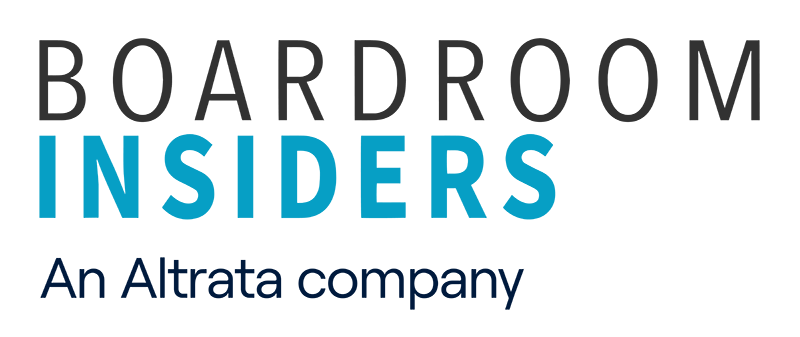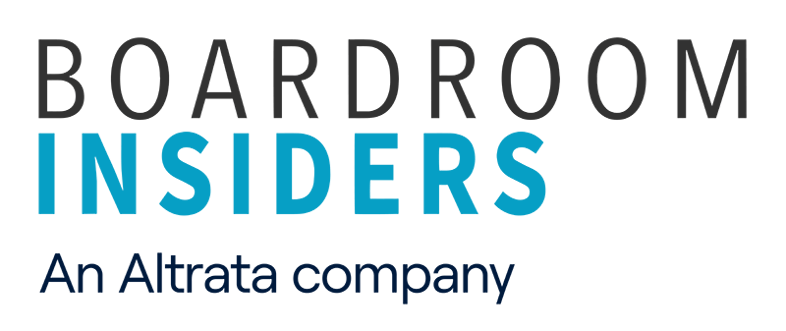.png?width=700&name=How%20to%20Get%20the%20Most%20Out%20of%20Your%20Executive%20Briefing%20Center%20(2).png)
One of the coolest tools used by tech companies to woo customers and close bigger deals is the executive briefing center (EBC). EBCs are typically housed in slick, beautifully-designed facilities rich with cutting-edge technology, interactive demos, and really good catering.
What is an Executive Briefing Center?
EBCs are designed to dazzle visitors and showcase the company in its most impressive light.
Executive Briefings uncover new deal opportunities and/or shorten the sales cycle. According a recent study by the Association of Briefing Program Managers, or ABPM:
- 71 percent of customers made the decision to purchase products or services discussed in their briefings
- 75 percent said the briefing influenced their decision
- 46 percent of purchasers said briefings shortened the purchase cycle by an average of 30 percent
- 72 percent of customers said the amount of their purchase increased by an average of 36 percent as a result the briefing
- 76 percent said they discovered additional solutions during the briefing that appeared to be useful to their company.
Executive Briefings Are Not Always Done Right
So Executive Briefings, when done right, are no-brainers.
The problem is, they are not always done right. There are two main pitfalls that can derail your Executive Briefing.
- Not researching the customer thoroughly
- Relying exclusively on the sales team for customer insight
These two things are related, in that if you lean only on sales to provide the insight, you are probably missing a lot. Superstar sales pros aside, many sales people are most concerned with what deals are on the table, who the decision makers are, what they have bought in the past.
Focus on What Your Customer Cares About
While these things are important, what you should be more focused on is what the customer cares about and make sure someone does the external research to uncover anything that might be missing. For example, you should never go into one of these meetings without a summary of the customer’s strategy and business priorities. After all, an Executive Briefing is an opportunity to curate a business conversation between your customer and your own executives and subject matter experts. To prep for this type of conversation, you need to know the basics.
So what does it mean to do it right?
Think of your Executive Briefing Center as theater. The curtain goes up and everything down to the last detail needs to be set and ready. You’re creating an experience in that room, hopefully hyper-personalized. For Darby Mason-Werner, Director of Client Solutions for Signet, a critical element of prepping for a briefing is collecting information on the client.
“The most important pieces are at what level they’re coming, what’s going on with the account, who is coming and what’s their role, what are the pain points,” Mason-Werner said. “This adds value to what our agenda needs to look like. Then we can have the right people participating who can address those issues. We can craft the right message. Everything is customized based on our knowledge of the customer.”
Signet creates a customer-facing portal that is kept up to date in real-time, including throughout the meeting and afterward. This “digital engagement platform” does everything from provide maps and directions to the center and the meeting room and restrooms, to collecting real-time feedback on presenters and the agenda, to providing suggestions for local restaurants based on customer preferences. It also contains links to articles relevant to the customer’s industry and to the technologies being discussed. It’s all fed by a scheduling tool called BriefingSource from EchoVision.
The scheduling tool is key to personalization, Mason-Werner said. The more detailed it is, the better the Briefing Program Manager can create a relevant experience, from the agenda, to the correct presenters, to even the food that is ordered for the meeting. Additionally, Mason-Werner said, there are fields for each attendee for “discovery information” that can range from hobbies to which executives they have met with in the past and what they discussed.
Marnie Merriam, Director of Executive Programs at Slack Technologies agrees, that customer insight is critical. “Knowing your customer, really understanding the humans who are making these business decisions, is so important,” she says. “They have a vision and they’re often making a big bet on a new technology or solution—for them this may be a decision that could catapult their company forward. The stakes are high.”
Slack Technologies, Merriam explained, uses a specific methodology that relies on customer feedback prior to them even stepping through the door. They also have regular check-ins with their internal team in the weeks leading up to the engagement to surface relevant information and tailor the agenda to meet the customer’s objectives. “Once you have a clear understanding of who will be in the room—their background, goals, vision and challenges—much of the other prep falls into place,” she says.
Merriam adds that the company uses Slack for all their internal communications in the lead up to the briefing. They organize EBCs in specific channels in which they share information about the customer. “Channels provide an added layer of context above the insights from the account team and the research by our Executive Programs team,” she said.
Given that this is such a detail-oriented exercise with so much riding on each experience, Merriam says one of her favorite best practices is a simple one: “Make it easy. From the smallest detail, like finding the Briefing Center, to knowing who’s who in the room, to the objectives for each agenda topic, these need to be easy and clear for all involved so that we can focus on the quality of the conversation during our time together. The details surrounding the engagement should be so seamless that they’re almost unnoticed; and if they are noticed we want those experiences to be delightful.”
Executive Briefing Center Best Practices: Four Tips For Success
Of course, those of us who do this type of work know the heavy lifting that needs to happen behind the scenes to make the experience look effortless and perfectly-orchestrated to the customer. Here are four basic tips for ensuring success:

Read the company’s latest earnings call transcripts and make note of anything said that provides your company with a “hook” for a business conversation. The latest public company transcripts can be accessed for free on Seekingalpha.com (this tip does apply to public companies only).
Make sure you read the Q&A with analysts as often important information is revealed in these less-scripted comments. You can show your interest by referencing relevant comments in your meeting and using them as jumping off points for discussion.
For example:
“Bob, last month your CEO told analysts that personalization was a big priority for your company. How does this impact your own priorities and projects?”
.png?width=600&name=How%20to%20I%20Research%20My%20Customers%20(2).png)
Research each person from your customer company who will be attending the briefing. Go beyond LinkedIn, using Google to uncover any articles they may have written, speeches they might have given, or connection to any other company or organization. For example, you might find they are quoted in a customer case study from one of your partners or competitors. This is important stuff for you to know. It is also information your contact probably would not think to provide in a pre-briefing questionnaire.

Make sure you Google the customer company name and your company name together to uncover any connections. Do the same with the name of each customer who is attending.
We heard a horror story about a senior executive who came to a briefing and the vendor team was completely unaware that he had done a reference video for the them the previous year that was posted right on their website. Not only was there no acknowledgement and thank you for the enormous favor that this busy executive had done, they were completely unaware of it and looked clueless to the customer, who was annoyed and taken aback, which cast a pall over the day’s activities.

Finally, make sure you package all of the above into a concise, easy to read format and distribute it to your own executives and subject matter experts—in advance. Many companies have templates that they use, so that their team knows what to expect and becomes accustomed to consuming the information in a consistent way.
As Former Cisco CEO John Chambers once reportedly said, “Before I go into a customer meeting, I want to know what color socks they are wearing.” While you should not take this suggestion literally, do make sure that customer research is at the top of your Executive Briefing checklist.
*** Editor's Note: This post was originally published in April 2016 and has been completely revamped and updated for accuracy and comprehensiveness.







Share Your Thoughts